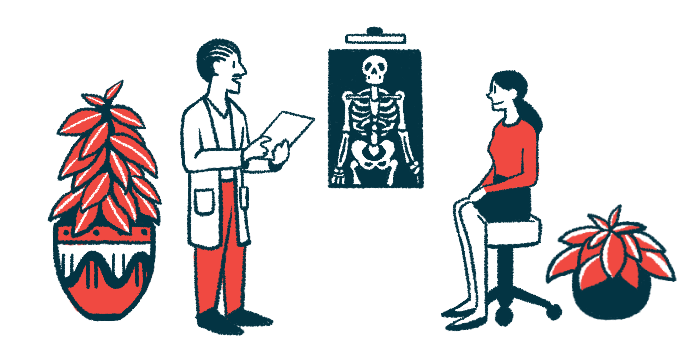Vascular abnormalities complicate clinical care of kEDS: Case study
Report highlights increased risk of vascular accidents that may occur in kEDS

A young woman with kyphoscoliotic Ehlers-Danlos syndrome (kEDS) showed severe alterations in blood vessels that complicated her clinical care, a case study reports.
“kEDS is a rare disease impacting multiple organ systems requiring the involvement of a specialized multidisciplinary team to optimize management,” researchers wrote.
The case study, “A severe case of PLOD1-related kyphoscoliotic Ehlers–Danlos syndrome associated with several arterial and venous complications: A case report,” was published in the journal Clinical Case Reports.
kEDS characterized by sideways curvature of spine and hunched back
Kyphoscoliotic EDS, one of the 13 subtypes of EDS, is characterized by kyphoscoliosis, a sideways curvature of the spine in combination with a hunched back.
Mutations in the PLOD1 or FKBP14 genes can cause kEDS. Patients may develop severe blood vessel abnormalities, including an aneurysm, which is a bulge in a blood vessel caused by a weakness in the blood vessel wall.
In this report, a team from France described the case of a woman diagnosed with severe kEDS due to two novel mutations in the PLOD1 gene.
The 29-year-old woman was born with hypotonia (low muscle tone), joint hypermobility, and a foot deformity called vertical talus. She walked without assistance at 24 months old, and was diagnosed with myopia (nearsightedness) and kyphoscoliosis in childhood.
Her kyphoscoliosis progressed rapidly, despite early disease management, and required four surgical interventions over six years. Her last spinal surgery, at age 14, improved her mobility but she was never able to run.
Her breathing capacity was reduced, which required noninvasive ventilation. She fell frequently and had difficulty climbing stairs. Her myopia worsened during her 20s, with the development of a chronic and progressive form of optic nerve damage called open-angle glaucoma.
kEDS is a rare disease impacting multiple organ systems requiring the involvement of a specialized multidisciplinary team to optimize management.
Patient treated for pulmonary embolism
She received treatment for a pulmonary embolism, which refers to a blood clot that travels to and blocks an artery in the lung, and showed progressive muscle weakness in the legs. Walking, balance, and autonomy were increasingly difficult.
A muscle biopsy confirmed nerve damage, along with loss of the myelin sheath that insulates nerve projections and facilitates nerve cell communication. The patient also developed urinary and bowel incontinence.
Upon hospital admission, she had minor pectus carinatum (a deformity of the chest wall in which the breastbone and ribs are pushed outward), flat feet, clubfoot (a condition when the foot is turned inward and downward) along with other abnormalities.
She complained of muscle weakness affecting mainly her legs, had stretchy skin (hyperextensibility) with several scars, and had enlarged veins and bruises on her legs. She also had blue sclera, which happens when the white of the eye (sclera) is tinted blue.
Given these symptoms, she was diagnosed with kEDS. Genetic testing identified two novel disease-causing mutations, one in each copy of the PLOD1 gene.
Her symptoms continued to worsen following diagnosis, and she developed compression and shrinkage (atrophy) of the spinal cord. Further clinical examination revealed a shortage of blood supply to the spleen and a small widening of the splenic artery.
Vascular events complicates patient’s clinical care
Blood flow examination in the arteries of the patient’s lower legs revealed several complications that included aneurysms. The patient’s left ventricular ejection fraction, a measurement of how much oxygen-rich blood is being pumped out to the body, was reduced to 43%.
She was referred to a vascular medicine department for management and follow-up of blood vessel complications. However, this disrupted her lumbar pain management, which became resistant to pain killers.
Additional interventions including further spinal surgery were considered, but an unfavorable benefit-risk balance led to the choice of a palliative treatment strategy.
“We report the natural history of a woman with a severe kEDS phenotype in whom the occurrence of vascular events complicated management and clinical care of her other complications of kEDS,” the investigators wrote.
“Our case underlines the increased risk of vascular accidents that may occur in kEDS-PLOD1,” they concluded.








